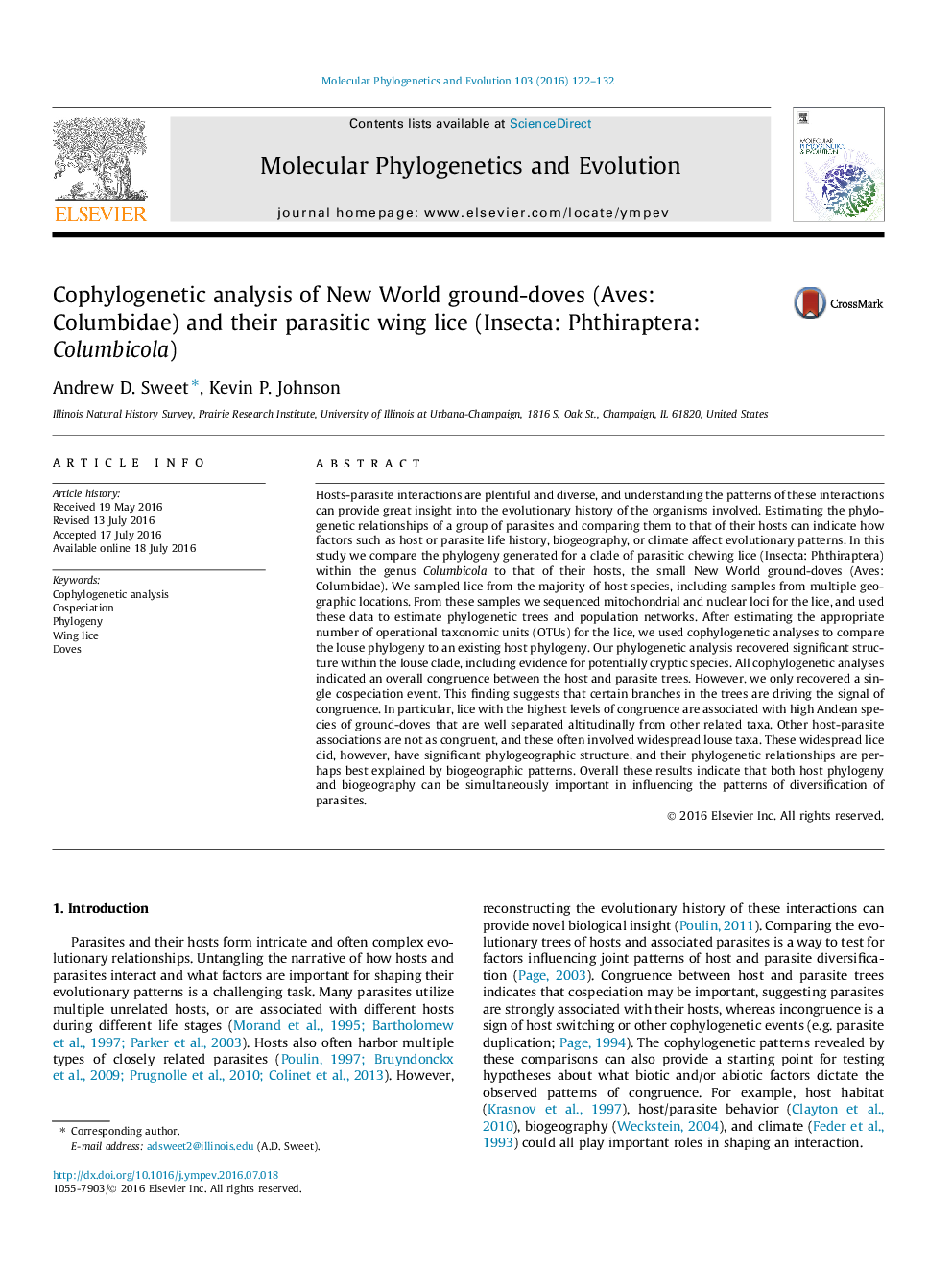| کد مقاله | کد نشریه | سال انتشار | مقاله انگلیسی | نسخه تمام متن |
|---|---|---|---|---|
| 2833633 | 1570794 | 2016 | 11 صفحه PDF | دانلود رایگان |

• We estimated phylogenetic trees of a clade of wing lice that parasitize New World ground-doves.
• Cophylogenetic analysis indicated overall congruence between the louse and parasite phylogenies.
• Congruence is most likely driven by the association between Metriopelia doves and their wing lice.
• The louse phylogeny is significantly structured according to host biogeography.
• Phylogeographic structure among the wing lice provides insights into the evolutionary history of their hosts.
Hosts-parasite interactions are plentiful and diverse, and understanding the patterns of these interactions can provide great insight into the evolutionary history of the organisms involved. Estimating the phylogenetic relationships of a group of parasites and comparing them to that of their hosts can indicate how factors such as host or parasite life history, biogeography, or climate affect evolutionary patterns. In this study we compare the phylogeny generated for a clade of parasitic chewing lice (Insecta: Phthiraptera) within the genus Columbicola to that of their hosts, the small New World ground-doves (Aves: Columbidae). We sampled lice from the majority of host species, including samples from multiple geographic locations. From these samples we sequenced mitochondrial and nuclear loci for the lice, and used these data to estimate phylogenetic trees and population networks. After estimating the appropriate number of operational taxonomic units (OTUs) for the lice, we used cophylogenetic analyses to compare the louse phylogeny to an existing host phylogeny. Our phylogenetic analysis recovered significant structure within the louse clade, including evidence for potentially cryptic species. All cophylogenetic analyses indicated an overall congruence between the host and parasite trees. However, we only recovered a single cospeciation event. This finding suggests that certain branches in the trees are driving the signal of congruence. In particular, lice with the highest levels of congruence are associated with high Andean species of ground-doves that are well separated altitudinally from other related taxa. Other host-parasite associations are not as congruent, and these often involved widespread louse taxa. These widespread lice did, however, have significant phylogeographic structure, and their phylogenetic relationships are perhaps best explained by biogeographic patterns. Overall these results indicate that both host phylogeny and biogeography can be simultaneously important in influencing the patterns of diversification of parasites.
Figure optionsDownload as PowerPoint slide
Journal: Molecular Phylogenetics and Evolution - Volume 103, October 2016, Pages 122–132